As a (mostly) full-time RVer in my Winnebago View, I’ve learned that reliable power is non-negotiable. After years of babying my AGM batteries and constantly monitoring their state of charge to avoid dipping below that dreaded 50% mark, I finally decided it was time to join the lithium revolution. Today, I’m sharing my experience upgrading to a LiTime LiFePO4 battery and DC-DC charger system – a decision that has transformed my off-grid capabilities.
The Hunt for the Perfect Fit
Anyone who owns a Winnebago View knows that storage space comes at a premium, especially in the battery compartment. My search for a lithium replacement quickly hit a roadblock when I discovered most lithium options wouldn’t fit in my existing battery box. Then I stumbled upon the LiTime 12V 230Ah LiFePO4 battery, which perfectly fit the dimensions where my two Group 24 AGM batteries had lived. They also have a Bluetooth version here.
This wasn’t just a size victory – at 230Ah, this single battery effectively tripled my usable capacity while dramatically reducing weight. My previous AGM setup technically provided 130Ah (two 65Ah batteries weighing a hefty 60 pounds each for a total of 120 pounds), but I could only safely use about 65Ah to avoid damaging them. With the LiTime lithium battery weighing just 46 pounds, I’ve shed nearly 100 pounds from my rig while gaining the ability to comfortably use over 200Ah by discharging down to 10% without any battery anxiety.
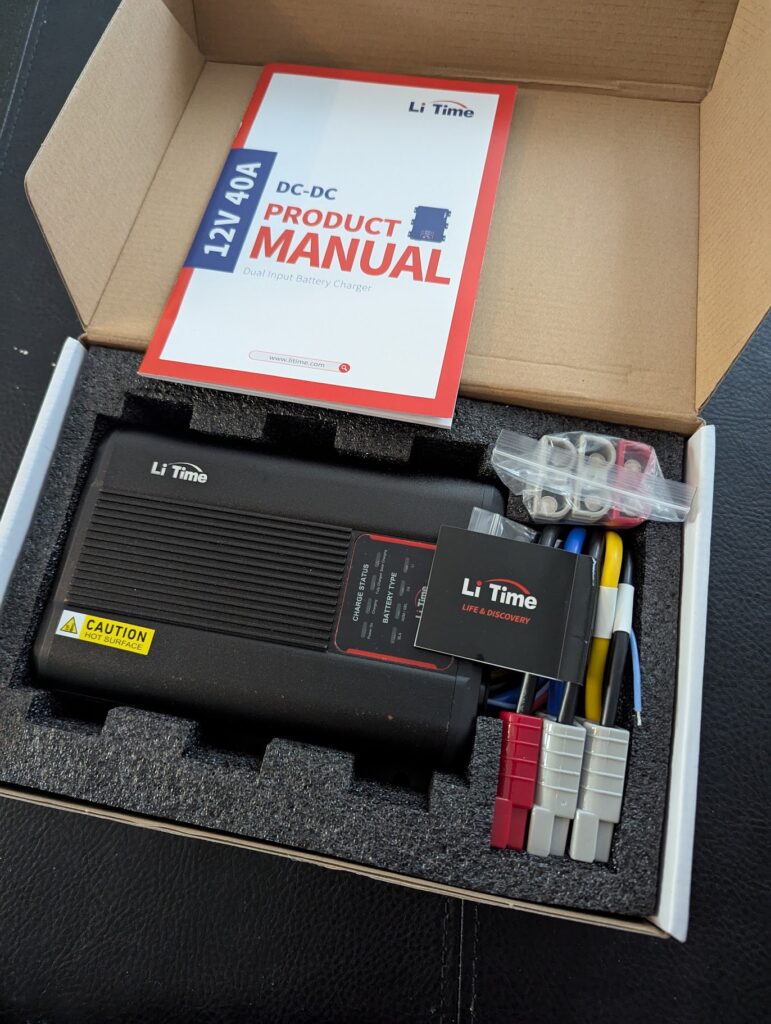
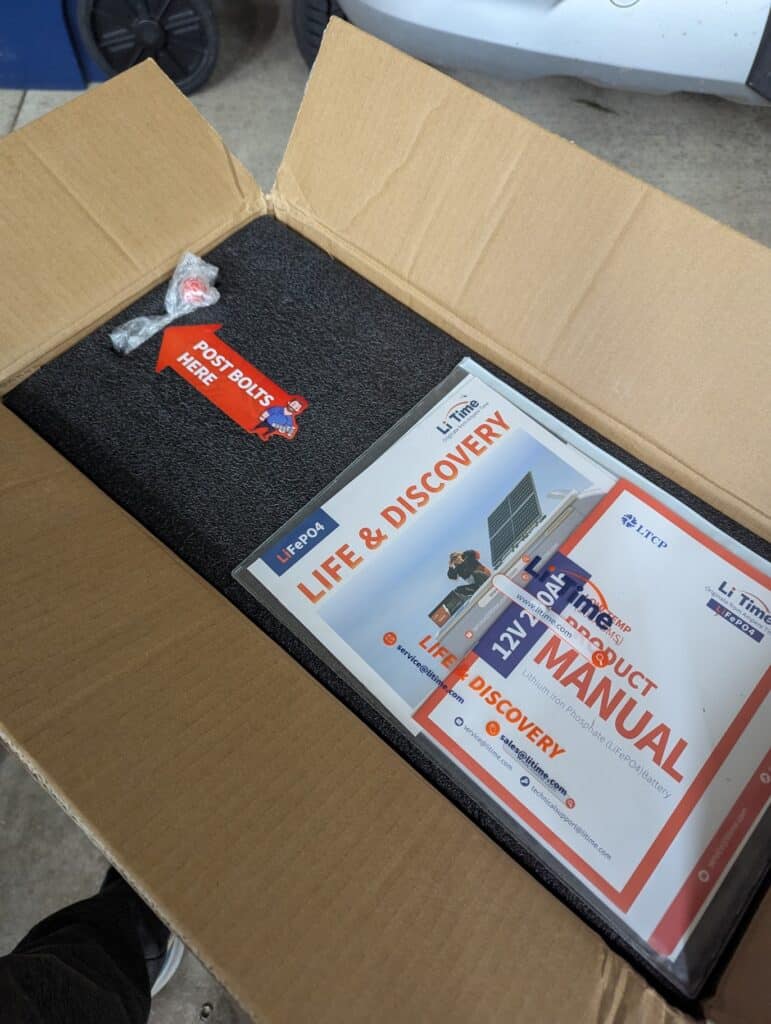
Why I Added a DC-DC Charger
While researching lithium batteries, I discovered that simply swapping batteries wasn’t the complete solution. A DC-DC charger quickly emerged as an essential companion piece, and here’s why I decided on the LiTime 12V 40A DC-DC Charger:
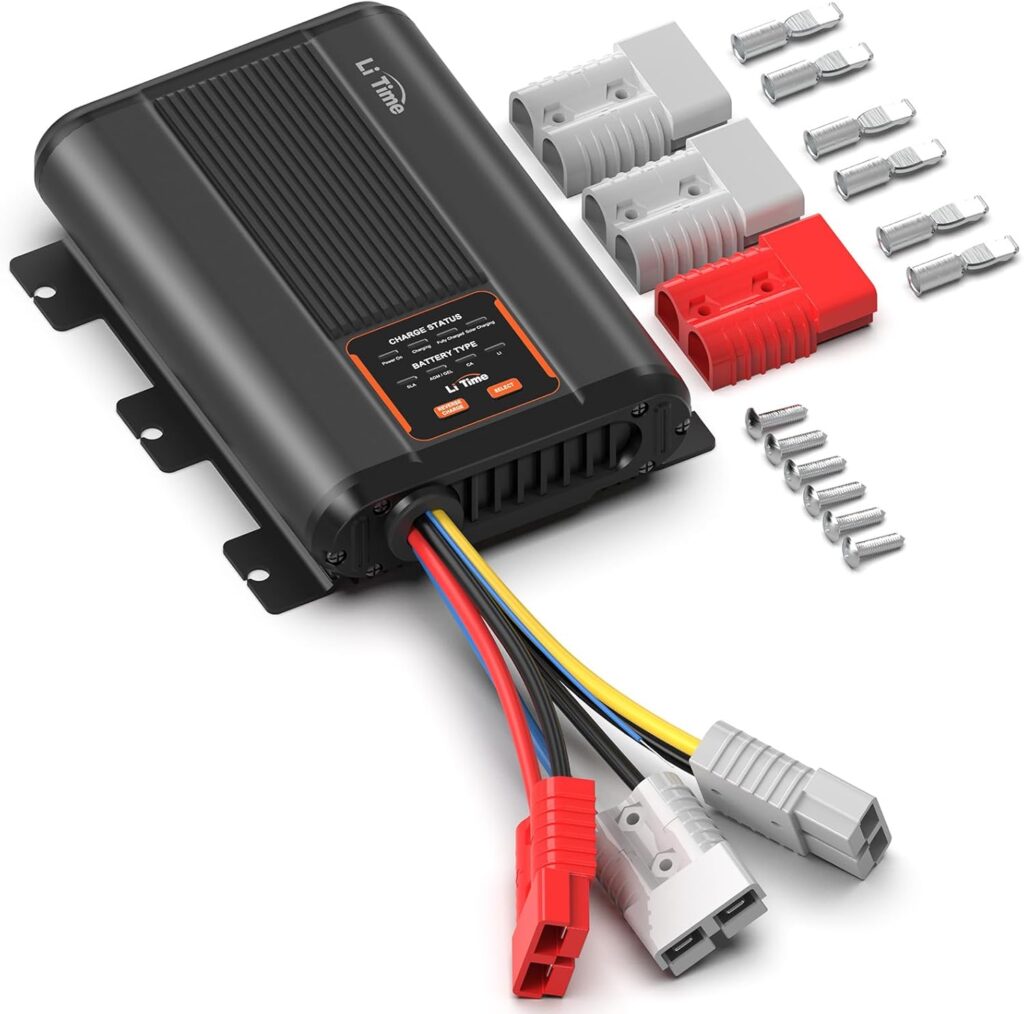
Why Do We Need a DC-DC Charger?
If you’re new to the lithium game, you might be wondering why a DC-DC charger is necessary when your alternator already charges your batteries while driving. Here’s what I learned:
- Alternator Protection: Lithium batteries have much lower internal resistance than lead-acid batteries, meaning they can draw massive current from your alternator when they’re depleted. This high current draw can overheat and potentially damage your alternator, which is designed for the slower charging needs of your starter battery. A DC-DC charger acts as a buffer, regulating the current to protect your expensive alternator from premature failure.
- Optimal Charging Voltage: Lithium batteries require a specific charging voltage (typically 14.4V-14.6V) to reach full capacity. Many vehicle alternators can’t consistently deliver this voltage, especially at the end of the long wire run to your RV batteries. The DC-DC charger boosts the voltage to ensure your lithium batteries receive their ideal charging profile.
- Two-in-One Solar Solution: The LiTime DC-DC charger also functions as an MPPT solar charge controller, eliminating the need for a separate solar controller. This two-in-one approach simplified my installation and saved valuable space.
- Battery Isolation: The DC-DC charger prevents power from flowing backward from my RV batteries to my vehicle’s starter battery, ensuring I never wake up to a dead engine because my RV systems drained my starter battery overnight.
Installation: Easier Than Expected
I was pleasantly surprised by how straightforward the installation process was for both components. The LiTime battery slid perfectly into the space where my two AGM batteries had been, and the wiring was a simple one-for-one swap.
The DC-DC charger installation was equally user-friendly. The package included all necessary cables and connectors, with clear instructions that didn’t require an electrical engineering degree to understand. I mounted it directly in the battery box near the new battery, connected the input to my vehicle’s charging line, and the output to my new lithium battery. The supply very handy 50A Anderson connectors to ensure an easy and secure connection.
Within a couple of hours, I had completed the entire upgrade with basic tools and moderate DIY skills.
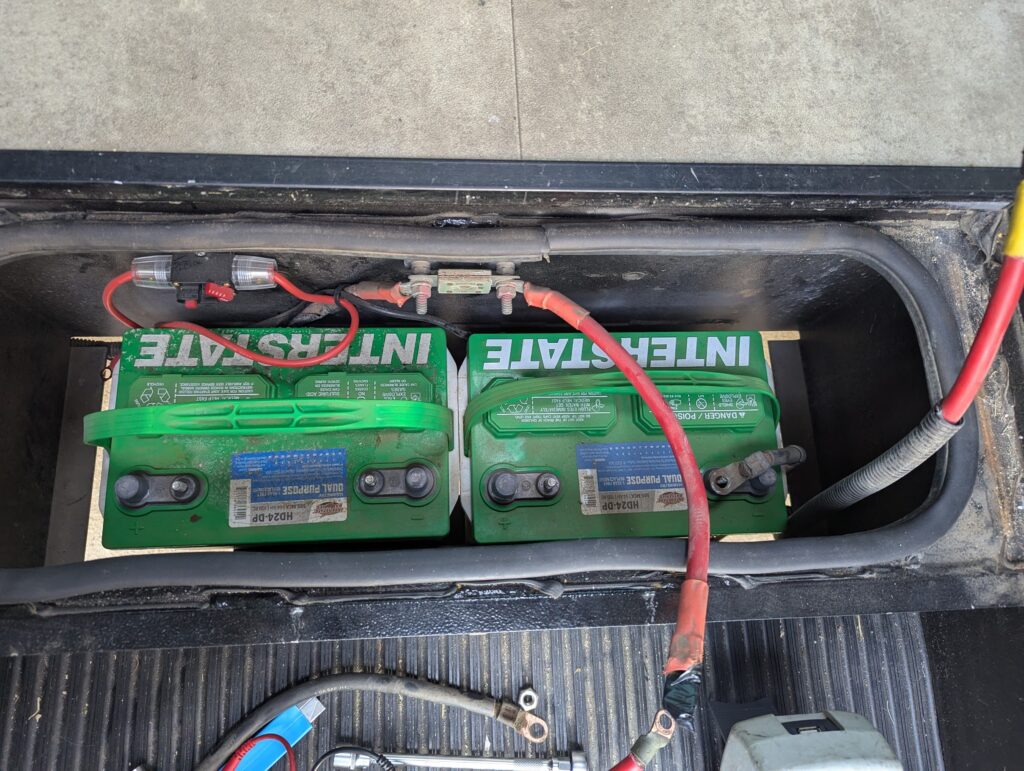
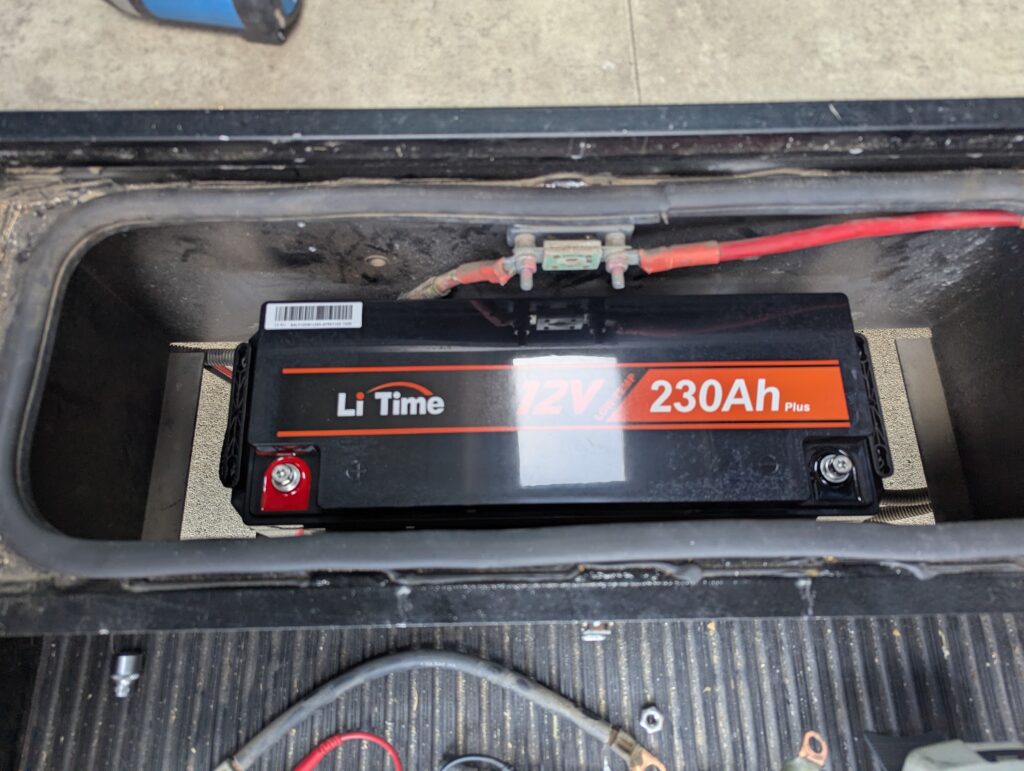
Performance: Living the Lithium Life
After several weeks of use, I can confidently say this upgrade has really improved my RV experience. The most immediate benefit is peace of mind – I no longer obsessively check my battery voltage, knowing I have significantly more usable capacity.
The LiTime LifePO4 battery maintains voltage much better under load than my old AGMs. When running my inverter for coffee in the morning, I see minimal voltage drop compared to the significant sag I used to experience. This stable voltage means appliances run more efficiently and my power system is less stressed.
Charging performance has been equally impressive. The DC-DC charger pumps a consistent 40 amps while driving, meaning even a short 1-hour drive adds significant power back to my battery. This quick recharge capability has changed how I plan my travels, allowing more flexibility with shorter drives between boondocking locations.

LiTime vs. Victron: The Value Proposition
When researching DC-DC chargers, I seriously considered the Victron Energy Orion XS Smart DC-DC Charger, which is widely regarded as the gold standard. However, at nearly twice the price of the LiTime, I had to weigh the benefits against the cost.
What the Victron offers that the LiTime doesn’t is Bluetooth connectivity and a fancy smartphone app that provides detailed monitoring and programming options. The LiTime relies on simple LED indicators to show charging status and mode.
However, what tipped the scales for me was that the LiTime includes MPPT solar charging capability, essentially combining two devices in one. This meant I could eliminate my separate solar charge controller, simplifying my electrical system while saving money. I was able to hook up my 400 watts of solar with zero issues.
For those who geek out on detailed power monitoring, the Victron might be worth the premium. But for practical everyday use, the LiTime provides the core functionality I need at a much more attractive price point.
Final Verdict: A Game-Changing Upgrade
If you’re on the fence about upgrading to lithium power in your RV, I can’t recommend it enough. The combination of the LiTime 230Ah battery and their DC-DC charger has fundamentally changed how I use my Winnebago View. I now have the confidence to boondock longer, use power more freely, and worry less about battery maintenance.
What impressed me most about the LiTime products was finding high-quality lithium power components that specifically addressed the space constraints of my particular RV model. The battery’s perfect fit in my existing compartment made what could have been a complicated upgrade surprisingly straightforward. Their 5-year warranty on the battery and 2-year on their DC-DC charger is also comforting. I have used their products for years, as I have their 100AH LiFePO4 battery in my race trailer linked up to 300 watts of solar.
For anyone with a similar Class C RV looking to make the lithium leap, the LiTime battery and DC-DC charger combo offers an excellent balance of performance, ease of installation, and value. Six months from now, I suspect I’ll be wondering why I waited so long to make the switch.




